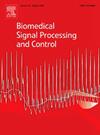Asynchronous state estimation for switched nonlinear reaction–diffusion SIR epidemic models with impulsive effects
IF 4.9
2区 医学
Q1 ENGINEERING, BIOMEDICAL
引用次数: 0
Abstract
This paper focuses on the asynchronous interval type-2 fuzzy state estimation for switched nonlinear reaction–diffusion susceptible–infected–recovered (SIR) epidemic models with impulsive effects. Initially, based on the stage characteristics of epidemic outbreaks, impulsive switched reaction–diffusion neural networks are proposed to model SIR epidemics more comprehensively. Then, the investigated models are linearized by using the interval type-2 Takagi–Sugeno fuzzy method, which can handle the nonlinearity and uncertainty of the system well. Next, considering the phenomenon of asynchronous switching between the system state and the estimator one due to system identification and other factors, the asynchronous fuzzy state estimator with switching and impulsive features is designed to accurately estimate the state of the target systems. Finally, sufficient conditions for ensuring the state estimation error to be stable are derived, and the effectiveness of the theoretical results is validated by numerical examples.
求助全文
约1分钟内获得全文
求助全文
来源期刊

Biomedical Signal Processing and Control
工程技术-工程:生物医学
CiteScore
9.80
自引率
13.70%
发文量
822
审稿时长
4 months
期刊介绍:
Biomedical Signal Processing and Control aims to provide a cross-disciplinary international forum for the interchange of information on research in the measurement and analysis of signals and images in clinical medicine and the biological sciences. Emphasis is placed on contributions dealing with the practical, applications-led research on the use of methods and devices in clinical diagnosis, patient monitoring and management.
Biomedical Signal Processing and Control reflects the main areas in which these methods are being used and developed at the interface of both engineering and clinical science. The scope of the journal is defined to include relevant review papers, technical notes, short communications and letters. Tutorial papers and special issues will also be published.
 求助内容:
求助内容: 应助结果提醒方式:
应助结果提醒方式:


